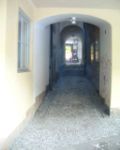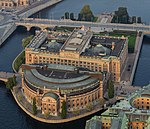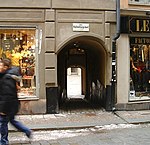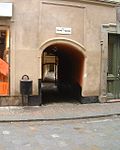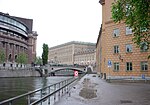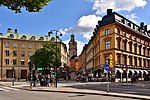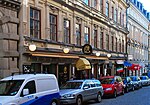Stallbron
Bridges completed in 1879Bridges in StockholmSwedish bridge (structure) stubs

Stallbron (Swedish: "The Stable Bridge") is an arch bridge located in Gamla stan, the old town in central Stockholm, Sweden. Stretching some 20 meters over Stallkanalen it connects Riksgatan passing through the Parliament Building on Helgeandsholmen to the square Mynttorget on Stadsholmen from where Västerlånggatan extends it further south. It was named in the late 19th century after the Royal Stables which king Gustav Vasa had built on Helgeandsholmen in the 1530s, thereafter rebuilt by Karl IX 1604–12, and finally demolished in 1640 when the present stables were completed on Norrmalm, one km to the north.
Excerpt from the Wikipedia article Stallbron (License: CC BY-SA 3.0, Authors, Images).Stallbron
Tage Erlanders Plats, Stockholm Gamla stan (Södermalms stadsdelsområde)
Geographical coordinates (GPS) Address External links Nearby Places Show on map
Geographical coordinates (GPS)
| Latitude | Longitude |
|---|---|
| N 59.326972222222 ° | E 18.068305555556 ° |
Address
Stallbron
Tage Erlanders Plats
111 28 Stockholm, Gamla stan (Södermalms stadsdelsområde)
Sweden
Open on Google Maps


